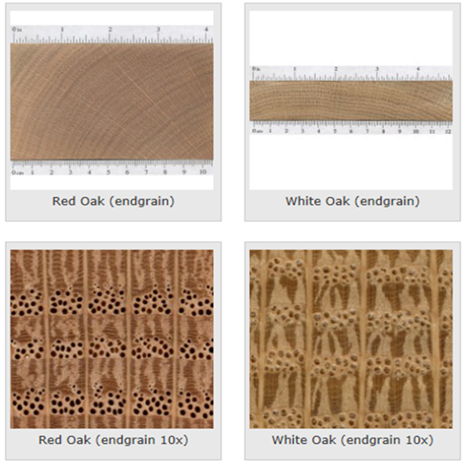
Solid wood flooring is one of the most recognizable and unique flooring surfaces available on the market today. There is an abundance of options, from the species of wood and its color or warmth to the more technical aspects such as wood hardness
or ability to accept stain. These and many other factors should be considered before choosing a type of wood for any given project. One of the most common of these wood choices in the United States is oak.
There are two main species of oak that are prevalent in the solid wood flooring market: red oak and white oak. It is vitally important to fully comprehend their intrinsic differences and how to distinguish between the two, as they react differently
when used with waterbased coatings. Typically, there is a noticeable color difference between the two, one being “white” or “blonder,” and the other being “red,” but this is not always the case.
At times, distinguishing between red and white oak can be so difficult that now some companies manufacture testing kits. However, if you understand a few parameters, telling the difference is a piece of cake. To make sure you have the correct wood
for your purposes prior to purchase, follow these instructions:
• Remove a piece of flooring from the pallet.
• Turn the board so the end is easily visible.
• Visible holes or “bullets” in the cut end
of the board indicate red oak.
• “Fills” or “no bullets” indicate white oak.
• Crossbred flooring typically is a mix of “bullets” and “fills” and should be treated as if it is
white oak.

(click to enlarge)
But why does all this even matter?
Wood is made up of many active chemicals. One of those chemicals, tannin, is most prevalent in white oak and is very water soluble. Certain waterbased products can react with high levels of tannic acid, causing discoloration or heavy spots.
This results in blotchy floors, with potential color differences seen all across the field. Pulling out these tannins will cause a color transfer from board to board. Some professionals report this color as purple, green, or even red. When
applying stain, if the stain pigment does not completely penetrate and fill-out these “fills,” tannin can pull up through the stain and create an even bigger disaster.
The answer to preventing any potential unsatisfactory results is two full coats of a waterbased sealer that is designed to prevent tannin pull, such as Basic Coatings® Lock ‘N Seal™. This pre-catalyzed waterbased sealer has a specific blend of resins and solvents formulated to lock out the tannin pull problem.
Interested in learning more about Lock ‘N Seal? Click here or call us at 800-441-1934.